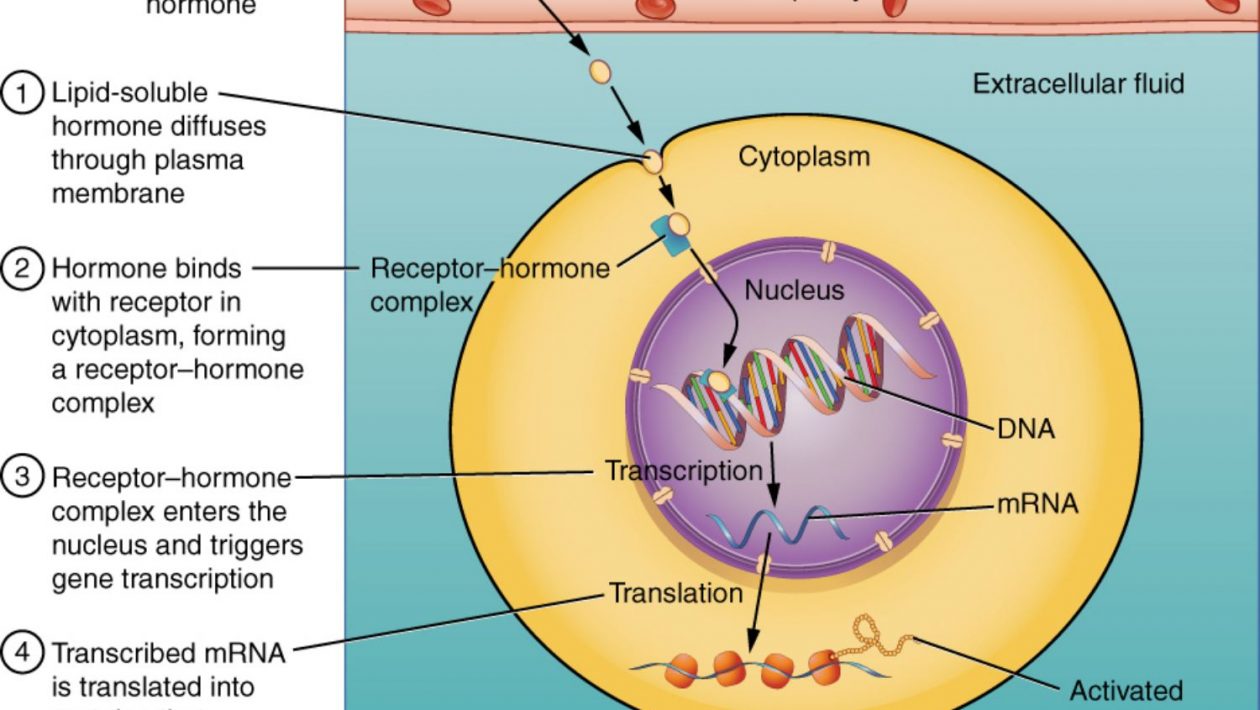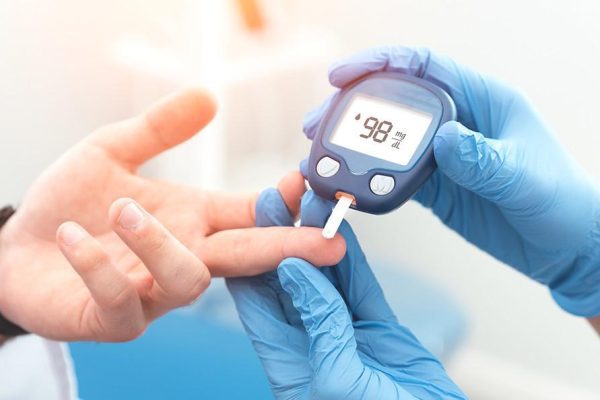Steroids, endogenous hormones, for example, sex hormones estrogen and testosterone or hormones of the adrenal cortex. Cortisone and aldocortin Play an important role in metabolic processes and are used in pharmaceuticals, Including hormone therapy, anti-rheumatic, anti-arthritic drugs, and bodybuilding drugs. Today we discuss What are the steroid hormones and there working details.
The three main segments include estrogen, growth hormone, and thyroid hormone;
they are used in general hormone replacement therapy and testosterone replacement therapy, and their current value is $ 3.6 billion. The main driver of market growth is raising awareness of postmenopausal risks in women. Other factors include aging populations, innovative drug delivery systems, and pharmaceutical markets in countries with economies in transition.
Steroid hormones are predominantly cholesterol-based and are synthesized by the endocrine glands and delivered to the target tissue by the bloodstream. At the site of application of action, they combine with highly specialized cellular receptors to perform a key function in protein formation, for the production of steroid hormones for pharmaceutical purposes outside the body.
Hormones first
Hormones are organic signaling molecules that transmit messages within the body and are involved in the regulation of internal processes. Its secreted by the endocrine system, enter the bloodstream, move with it in the body. Reach and activate target cells, and thus control metabolic also processes.
Hormones are protein, steroid, and amino acid derivatives. Protein hormones dissolve well in water, steroid hormones are synthesized from cholesterol and, conversely, avoid water and dissolve in fat. Therefore, they are also called lipid (fat) hormones. Steroids require transporter proteins to move, while protein hormones travel on their own.
The synthesis of steroid hormones regulates the central nervous system. The initial impulse, external or internal, enters the brain.
He begins to produce pathways (stimulating hormones) or statins (inhibitory).
They act on the pituitary gland, which in turn gives the command to act on the thyroid. The genital glands and adrenal glands, which begin or stop the production of hormones. Synthesized hormones enter the bloodstream and activate processes in tissues and cells.
The hormone reaches the desired cell and has an effect on its metabolism. Lipid hormones can even interfere with the process of reading genetic information – to activate or block the work of certain genes.
Hormones accompany us for most of our lives – they affect growth, puberty, hunger and satiety, sexual desire, and age-related changes. The hormonal system interacts with the immune system, regulates metabolism, and affects emotions. In a word, it deserves no less attention than neurotransmitters.
Androgen hormones
Androgens are male sex steroid hormones. They are present in both men and women, but they influence the formation of the male constitution. This process begins even in the womb – depending on the genes and chromosome set in the embryo, different types of receptors are activated. In boys, they will be sensitive to the mother’s testosterone, in girls – to estrogen. Genetically incorporated susceptibility to hormones will determine human development.
Studies have shown that men and women differ both at the physiological level and behavioral traits due to biology.
Not only external sexual characteristics but also the size of internal organs, the characteristics of the immune system, and the structure of the brain depend on sex.
In men and women, the sizes of the nuclei of the hypothalamus – the very center of neuroendocrine regulation, about which we spoke two paragraphs ago, differ. Women, for example, will have a larger nucleus that regulates the level of luteinizing hormone. It controls ovulation in women and testosterone levels in men.
Due to the high level of testosterone, men will be less prone to anxiety and depression.
Androgens also stimulate metabolism – cell renewal, muscle tissue growth, strengthening bones with calcium, and trabeculae (structural components of the bone).
In addition, they are responsible for more obvious things – the size of the genitals, the growth of a beard, mustache, and chest hair, a low voice. With a high level of androgens, these signs can also occur in women.
Hormones and their influence on the formation of a person’s personality are surrounded not only by the professional community, which has given rise to many myths. Some studies have insisted that maternal testosterone levels during the prenatal period affect fetal development, future behavioral characteristics, and even sexual orientation.
There is even such an indicator as to the ratio of the length of the index finger and ring finger, which can indicate an increased level of testosterone in the prenatal period and the prevalence of “male” behaviors in the character, both in men and women.
Androstenedione and Androstenediol
Androstenedione is a secondary sex hormone that is secreted by the testicles in men, the ovaries in women, and, in a small amount, by the adrenal cortex in both sexes. This is a precursor hormone: in the gonads in men, it is converted to testosterone, in the ovaries and adipose tissue in women, to estrone (female sex hormone). If adipose tissue exceeds the norm, estrogen levels may also increase in men.
The activity of androstenedione as an androgen hormone is about 20% of the activity of testosterone, but plays an important role in puberty.
Extraction in a liquid-liquid system from a counterflow
In the continuous direct extraction technology used by GEA, the fermented nutrient solution is processed by extraction in a liquid-liquid the system in counterflow. After precipitation, concentration, crystallization and drying of the extract, steroid hormones are available in the form of a crude salt and can be suitably processed in the pharmaceutical industry.
In the process of continuous direct extraction, the fermented nutrient solution undergoes an extraction process in a liquid-liquid system in a counter flow (also called solvent extraction or digestion). After precipitation, concentration, crystallization, and drying of the extract, steroid hormones are available in the form of crude salt and can be subsequently processed in the pharmaceutical industry.
Starting from the design and installation plan, process control tools (including following standard operating procedures) and environmental monitoring systems (heating, ventilation and air conditioning systems),
and ending with extraction systems, industrial hygiene plants and fully integrated comprehensive localization solutions, the company GEA has the experience and knowledge to implement and optimize complex processing lines for the production of steroids and hormones.
How do steroid hormones work?
Instances of steroid hormones incorporate sex hormones (androgens, estrogens, and progesterone) created by male and female sex organs and adrenal hormones (aldosterone, cortisol, and androgens).
Steroid Hormones Important Facts:
Steroid hormones are fat-dissolvable particles got from cholesterol. Hormones incorporate sex hormones and adrenal hormones. Testosterone, estrogens, and cortisol are instances of steroid hormones. Steroid hormones follow up on cells by going through the phone film, entering the core, authoritative to DNA, and starting quality translation and protein creation.
Illicit use and maltreatment of these hormones can prompt various negative wellbeing impacts.
How does it Work
Steroid hormones cause changes inside a cell by first going through the cell film of the objective cell. Steroid hormones, dissimilar to non-steroid hormones, can do this since they are fat-dissolvable.
The steroid hormone ties with a particular receptor discovered uniquely in the cytoplasm of the objective cell.
The receptor-bound steroid hormone at that point goes into the core and ties to another particular receptor on the chromatin. When bound to the chromatin, this steroid hormone-receptor complex requires the creation of explicit RNA atoms called errand person RNA (mRNA) by a procedure called interpretation.
The mRNA atoms code for the creation of proteins through a procedure called interpretation.
Types of Steroid Hormones
The most important representatives of steroid hormones of vertebrates are progesterone, cortisol, aldosterone, testosterone, and estradiol. The most important invertebrate hormone is ecdysone.
Female sex hormone progesterone refers to progestogens. It forms in the corpus luteum (Corpus luteum) of the ovaries. The concentration of progesterone in the blood varies in accordance with the life cycle. Progesterone prepares the uterine mucosa for the perception of a fertilized egg.
Estradiol is the most important representative of estrogen.
Estradiol regulates the menstrual cycle. It stimulates the proliferation of cells of the uterine mucosa and is also responsible for the development of secondary. Female sexual characteristics (development of the mammary glands, the nature of fat deposits, and the like).
Testosterone is the Most Important Representativeandrogens (male sex hormones). This hormone is also responsible for the development of secondary male sexual characteristics (muscle development, hairline, and the like).
He takes part in the regulation of protein and carbohydrate metabolism. Stimulating the degradation of proteins and the conversion of amino acids to glucose. Thus, it helps to increase the concentration of glucose in the blood (see. Sources of energy ).
Mineralocorticoid aldosterone:
It affects the function of the kidneys, were due to the activation of Na + / K + -ATPase. It ensures the retention of sodium salts in the body (reabsorption). At the same time, this process is accompanied by the elimination of K + from the body. Consequently, aldosterone indirectly raises blood pressure.
Calcitriol is a derivative of vitamin D (see Fat-soluble vitamins ). Calcitriol stimulates the absorption of calcium in the gastrointestinal tract and the incorporation of calcium into bone tissue.
Iodothyronine. Among the signal substances that are derivatives of amino acids, only thyroxin (tetraiodothyronine, T4). its active derivative triiodothyronine (TK) possess lipophilic properties. One phenolic residue more than the precursor molecule.
A characteristic feature of these compounds is the presence of iodine atoms at the positions 3,5,3 ′, 5 ′ (T4) and 3,5,3 ′ (T3) of the aromatic rings.





